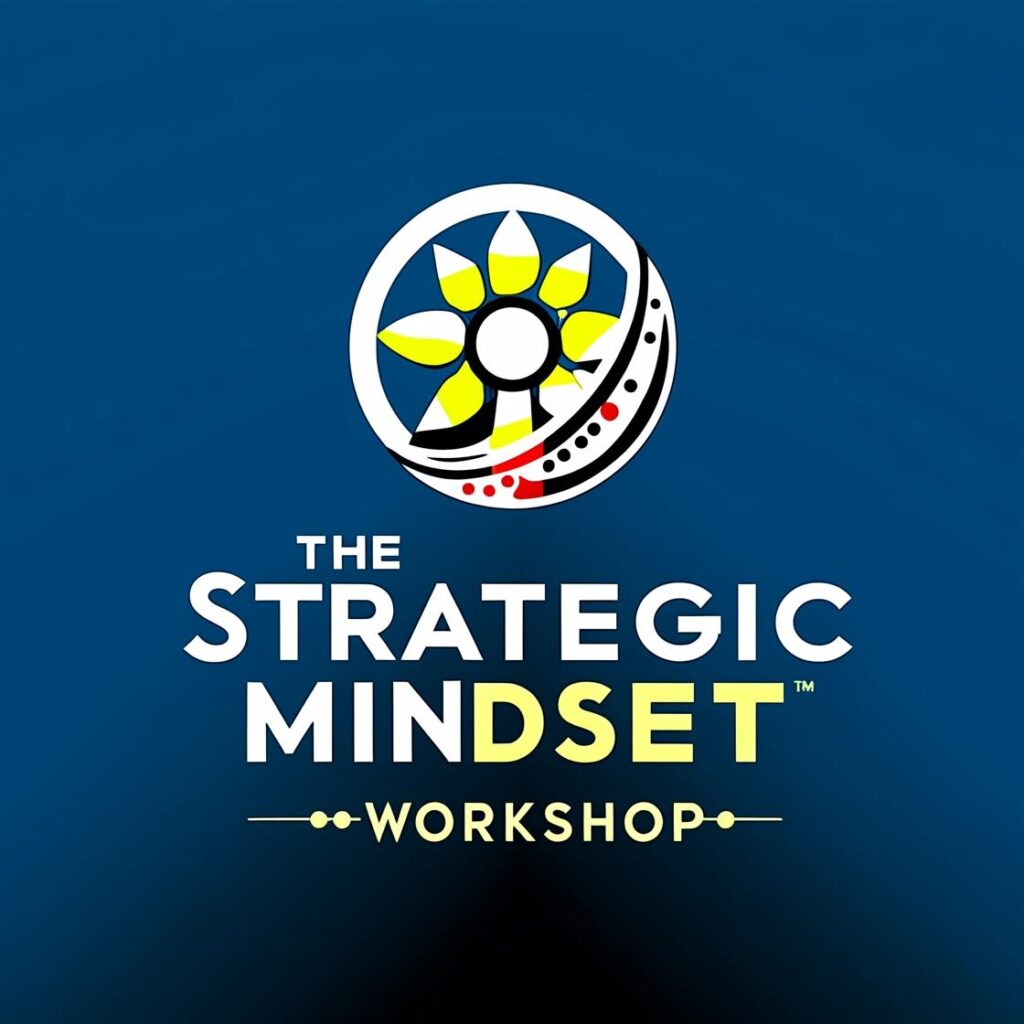Leadership trainers transform managers into inspiring leaders.
Leadership trainers have a unique and powerful role. Have you ever seen a team transformed by great leadership? It’s amazing to witness. As a manager, you have the power to create this change.
Becoming a leadership trainer is a rewarding journey that not only boosts your skills but also uplifts your entire team.
Strong leadership is more important than ever. Companies need leaders who can inspire, guide, and support their teams.
You might think, “Can I really be a leadership trainer?”
Yes, you can. With the right skills and strategies, you can become a powerful influence in your organization.
Leadership training isn’t just about teaching others. It’s about continuous learning and growing yourself.
When you commit to this path, you unlock your potential and help others do the same.
In this guide, we’ll explore the essential skills you need. I’ll also discuss strategies to transition smoothly into this vital role.
Ready to start your journey?
The Downside of Not Training Leaders
When managers don’t train leaders, the organization suffers. Many managers hesitate to train because they feel they lack the knowledge or experience. Others believe they don’t have the time.
However, these reasons can lead to bigger problems down the line.
Without training, future leaders are unprepared. They lack the skills needed to guide and inspire their teams. This leads to poor performance and unmet goals.
Untrained leaders often struggle with decision-making. They may feel overwhelmed or unsure, causing delays and mistakes. This can slow down progress and frustrate team members.
Communication breaks down without proper training. Leaders need to know how to convey ideas clearly and listen effectively. Poor communication leads to misunderstandings and conflicts.
Employee morale can also drop. When leaders are not equipped to support their teams, employees feel neglected. This can result in low motivation and high turnover rates.
The organization’s culture may suffer. Leaders set the tone for the work environment. Untrained leaders may not foster a positive, collaborative culture, leading to a toxic atmosphere.
Innovation and growth are stifled without training. Leaders need to be forward-thinking and adaptable. Without these skills, the organization may fall behind in a competitive market.
The lack of leadership training impacts the manager too. They may find themselves constantly putting out fires, rather than focusing on strategic goals. This increases stress and reduces overall effectiveness.
In short, not training leaders is a costly mistake. It affects every level of the organization, from individual employees to the company’s bottom line.
Investing in leadership training is the key to building a strong, successful, and resilient organization.
What is leadership training?
Leadership training refers to instructional and experiential activities provided to leaders in an organization to increase knowledge, build skills, and develop the standards of leading people and growing the business. Effective leadership training will help leaders do their jobs correctly and purposefully.
Canned vs Customized Training
If you are going to train supervisors, a canned program can be based on POLC Framework. Many training providers in the Philippines offer basic supervisory leadership skills training based on POLC Framework. You give this program to provide an introduction to management. However, keep in mind that many POLC-based supervisory training programs are lectures oriented.
Tailor-fit programs are usually more expensive. To be cost-efficient, Your training team can develop these programs with the help of a leadership trainer or consultant. A consultant can be a subject-matter expert, someone who has leadership experiences and a “formula” for leading people.
So, instead of providing 3-months of training on planning, organizing, leading, and controlling, you will address specific challenges of your supervisors.
Those with challenges in delegating tasks will master the principles, practices, and processes of delegating tasks.
You can even zoom in on specific skills in the delegation of tasks.
Tailor-fit training will allow you to provide just-in-time training, and the return on investment is immediate and repeatable.
Content vs Competencies
It is easy to be unique and different. It is challenging to be relevant.
It is easy to think of new acronyms for the leadership training program. That’s what they usually do in government. They use the initials of the local government executives. Or find ways to make L-E-A-D sound something serious.
Most training programs are contentful. I once participated in a Good to Great Workshop. It was a lectured version of the book of Jim Collins.
Someone converted Ram Charan’s Execution: The Discipline of Getting Things Done into three-day training. She filled her presentation slides with quotations from the book.1
Training is not so much about content.
Training is an intervention. You are helping leaders solve their challenges. You want them to learn principles so they can solve their leadership problems.
If you want people to become familiar with the ideas of a guru, gift each one a book. You do not have to send them to a seminar.
A seminar is not about the Good to Great book. It should be about helping leaders create a system, process, or develop skills to solve their leadership challenges.
Focus more on the competencies, the enabler of performance. The mission of a leadership trainer is to facilitate the discovery of solutions.
What Managers Really Want
Managers have one ultimate goal: improving performance and hitting goals. Every day, they strive to make their teams more effective and productive.
It’s a challenging job, but the rewards are immense.
When a team performs well, the whole organization benefits. Managers know that success depends on everyone working together. They need their teams to be motivated, skilled, and ready to tackle any challenge.
Many managers dream of seeing their team exceed expectations. But how can this be done consistently?
The secret lies in equipping people with the right skills and knowledge. When team members are fully trained and confident, they can perform at their best.
Effective leadership training helps managers empower their teams. It provides the tools needed to overcome obstacles and drive success.
Training creates a culture of continuous improvement.
Managers who invest in leadership training see remarkable results. Their teams are more engaged, more skilled, and more productive.
Consider becoming a leadership trainer. Equip your people with the skills they need, and watch them soar.
Pamumuno: Filipino Leadership
Leadership in Filipino is “pamumuno.” It’s a word packed with meaning, like a treasure chest waiting to be opened. The root word, “puno,” can mean “head,” the person at the top, the one who leads.
But here’s the twist: “puno” also means “full.” It’s not just about being at the front of the line or calling the shots; it’s about being full—of ideas, of energy, of a sense of responsibility.
When we talk about “pamumuno,” we’re not just talking about leadership in the traditional sense. We’re talking about leading in a way that fills gaps, that brings people together, that makes something whole.
Recognize the spaces where something is missing and stepp in to fill that space, not with authority, but with purpose.
In the Filipino context, leadership isn’t just about being the head; it’s about being the heart as well.
Pamumuno is about understanding that to lead is to serve, to fill the needs of others, and to make sure no one is left behind. So when we think about “pamumuno,” let’s think beyond titles and positions.
Let’s think about how we can be full—full of compassion, full of empathy, full of the drive to make things better for everyone around us.
Role of a Leadership Trainer
A leadership trainer is someone who teaches others how to be great leaders. They play a crucial role in developing skills and abilities in people. This helps the organization grow and succeed.
The main job of a leadership trainer is to guide and mentor future leaders. They provide the tools and knowledge needed to lead effectively. This includes communication skills, decision-making, and team-building.
Leadership trainers also create and deliver training programs. These programs are designed to address the specific needs of the organization. They ensure that all leaders are well-prepared for their roles.
An important part of being a leadership trainer is understanding the unique challenges of the organization.
Trainers must tailor their approach to fit the company’s culture and goals. This makes the training more relevant and effective.
Leadership trainers often act as role models. They demonstrate the qualities and behaviors they teach. By setting a good example, they inspire others to follow suit.
Leadership trainers provide constructive feedback to help leaders improve. This continuous support is vital for ongoing development.
Trainers also keep up with the latest trends and best practices in leadership. They continuously learn and adapt their methods. This ensures that the training they provide is always current and effective.
So, it really helps if a manager like you is a leadership trainer.
A leadership trainer is a mentor, educator, and role model.
Their work is essential in building strong leaders who can drive the organization towards success. By understanding this role, managers can better appreciate the value of leadership training.
Misconceptions About Leadership Trainers
Many believe that to be a leadership trainer, one must be an expert. This isn’t true. While expertise helps, what’s more important is the willingness to learn and grow alongside your team.
Another misconception is that training takes too much time. Managers often feel they are too busy to train others. However, integrating training into daily interactions can be highly effective and time-efficient.
Some think that only external trainers can provide valuable insights. In reality, managers have a unique advantage. They understand the organization’s culture and specific challenges.
Managers are already in leadership roles. This makes them relatable and credible trainers. Their real-world experience is invaluable in teaching practical skills.
By becoming leadership trainers, managers can directly influence their team’s development. This leads to better performance and higher morale.
Training others also helps managers improve their own skills. It reinforces their knowledge and keeps them sharp.
Moreover, internal training fosters a culture of continuous learning. It encourages everyone to strive for personal and professional growth.
Managers who train their teams build stronger, more cohesive units. This results in improved collaboration and productivity.
Managers are in an excellent position to become leadership trainers. They bring unique insights, foster a learning culture, and strengthen their teams, all while enhancing their own leadership abilities.
Essential Skills for Leadership Trainers
Having the right skills as a leadership trainer can transform your team and organization. These skills not only improve your effectiveness but also enhance the overall performance of those you train. Remember, you don’t need to master these skills before you start. You can develop them alongside your staff, growing together as leaders.
Communication Skills
Clear and effective communication is crucial. It helps in conveying ideas and instructions clearly. Good communication fosters understanding and reduces misunderstandings.
Emotional Intelligence
Understanding and managing emotions, both your own and others, is vital. Emotional intelligence helps build strong relationships and creates a supportive work environment.
Coaching and Mentoring
Coaching involves guiding others to find solutions themselves. Mentoring, on the other hand, is about sharing your experiences and knowledge. Both are key in developing future leaders.
Presentation Skills
Being able to present information in an engaging way is important. Good presentation skills help you capture your audience’s attention and make your training sessions more effective.
Problem-Solving and Critical Thinking
Leaders often face unexpected challenges. Having strong problem-solving and critical thinking skills allows you to navigate these challenges effectively and teach others to do the same.
Adaptability
The ability to adapt to new situations and changes is essential. Adaptable leaders can handle uncertainty and help their teams do the same.
Feedback and Listening
Providing constructive feedback and actively listening to your team members are crucial skills. They foster a culture of continuous improvement and mutual respect.
Time Management
Effective time management helps you balance training responsibilities with other duties. It ensures that you can deliver quality training without neglecting other tasks.
Conflict Resolution
Being able to resolve conflicts effectively is important. It helps maintain a positive and productive work environment.
Continuous Learning
Finally, the willingness to continuously learn and improve is key. It keeps you updated with the latest leadership trends and techniques, making your training more relevant and impactful.
By developing these essential skills, you not only enhance your own leadership abilities but also empower your team to achieve greater success. Start today, and grow together with your staff.
Transitioning into a Leadership Trainer Role
Transitioning into a leadership trainer role may seem daunting, but with the right strategies, it can be a smooth and rewarding process.
Here are some practical steps to help you make this transition effectively.
Self-Assessment
Start by evaluating your current skills and identifying areas for improvement.
Seek feedback from peers and mentors to gain insights into your strengths and weaknesses.
This self-awareness is crucial for growth.
Continuous Learning
Invest in your own development by enrolling in relevant courses and workshops. Read books and articles on leadership training to stay updated with the latest trends and techniques.
Continuous learning will keep you sharp and knowledgeable. Create a culture of learning in your organization.
Networking
Join professional organizations and attend conferences to build connections with experienced leadership trainers.
Networking provides opportunities to learn from others, share experiences, and gain valuable insights.
Gaining Experience
Look for opportunities to practice your training skills. Volunteer for training sessions within your organization or take on small groups to start.
The more you practice, the more confident and effective you will become.
Mentorship
Seek out a mentor who can guide you through the transition. A mentor with experience in leadership training can provide valuable advice, support, and feedback as you develop your skills.
Creating a Personal Training Philosophy
Develop a unique training philosophy that aligns with your values and strengths. This philosophy will guide your approach and help you stay focused on your goals.
Reflect on what you believe makes an effective leader and how you can impart those qualities to others.
Setting Goals
Establish clear, achievable goals for your development as a leadership trainer. Setting both short-term and long-term goals will help you stay motivated and track your progress.
Celebrate your achievements along the way to maintain momentum.
Tailoring Training Programs
Design training programs that address the specific needs of your organization. Understanding the unique challenges and culture of your organization will make your training more relevant and impactful.
Customize your approach to fit these needs.
Embracing a Growth Mindset
Adopt a mindset focused on growth and development. Embrace challenges as opportunities to learn and improve.
By staying open to feedback and continuously seeking to enhance your skills, you will become a successful leadership trainer.
Feedback and Improvement
Continuously seek feedback on your training sessions and use it to improve. Constructive feedback from participants and peers will help you refine your techniques and become a more effective trainer.
Follow these strategies so you can smoothly transition into the role of a leadership trainer and make a significant impact on your organization.
Remember, this journey is about continuous improvement and growth, both for you and the leaders you train.
Developing a Personal Training Philosophy
Creating a personal training philosophy is a vital step in becoming an effective leadership trainer. It serves as your guiding principle, helping you stay focused and consistent in your approach.

Here’s how to develop your own.
Identify Core Values
Start by identifying your core values. What do you believe in as a leader? These values will form the foundation of your training philosophy.
Reflect on what is important to you in leadership, such as integrity, empathy, or innovation.
Reflect on Your Experiences
Think about your past experiences as a leader and a learner.
What lessons have you learned?
What approaches worked best for you?
Use these reflections to shape your training philosophy, incorporating methods and strategies that you found effective.
Define Your Purpose
Clearly define your purpose as a leadership trainer.
Why do you want to train others?
What impact do you hope to achieve?
Having a clear purpose will keep you motivated and focused on your goals.
Determine Your Approach
Decide on the approach you will take in your training. Will you focus on hands-on learning, theory-based instruction, or a mix of both?
Consider the needs of your audience and the best ways to engage and inspire them.
Be Adaptable
Your training philosophy should be flexible enough to adapt to different situations and audiences.
Be open to adjusting your methods based on feedback and changing needs. Adaptability will make your training more effective and relevant.
Communicate Your Philosophy
Clearly communicate your training philosophy to your participants. Let them know what to expect and why you use certain methods.
This transparency builds trust and helps participants understand the value of your training.
Seek Feedback
Regularly seek feedback on your training philosophy and approach. Use this feedback to refine and improve your methods.
Continuous feedback ensures that your philosophy remains effective and aligned with your goals.
Stay True to Your Values
Finally, stay true to your core values. Your training philosophy should reflect who you are as a leader.
Authenticity builds credibility and trust, making your training more impactful.
Practical Tips for Effective Leadership Training
Effective leadership training can transform individuals and organizations. Here are some practical tips to ensure your training sessions are impactful and engaging.

Engage Your Audience
Start by engaging your audience from the beginning. Use icebreakers or quick activities to grab their attention. Ask questions and encourage participation to make the session interactive.
Use Real-Life Examples
Incorporate real-life examples and case studies relevant to your organization. This makes the training more relatable and helps participants see the practical application of the concepts.
Encourage Interactive Learning
Involve your participants in activities, group discussions, and role-playing exercises. Interactive learning helps reinforce concepts and makes the training more enjoyable and memorable.
Be Clear and Concise
Communicate your ideas clearly and concisely. Avoid jargon and complex language. Break down information into manageable chunks to ensure everyone can follow along.
Provide Practical Tools
Equip your participants with practical tools and techniques they can use immediately. Whether it’s a new communication strategy or a problem-solving framework, ensure they leave with actionable skills.
Give Constructive Feedback
Offer constructive feedback throughout the training. Highlight strengths and provide specific suggestions for improvement. This helps participants grow and develop their leadership abilities.
Use Visual Aids
Incorporate visual aids like slides, videos, and charts to enhance understanding. Visuals can make complex information easier to grasp and keep your audience engaged.
Create a Safe Learning Environment
Foster a supportive and safe learning environment where participants feel comfortable sharing their thoughts and asking questions. This encourages open dialogue and deeper learning.
Encourage Continuous Learning
Promote a culture of continuous learning. Encourage participants to seek further development and provide resources for ongoing education. This ensures they continue to grow beyond the training session.
Evaluate and Improve
After each session, evaluate its effectiveness. Collect feedback from participants to understand what worked well and what needs improvement. Use this information to refine your training for future sessions.










